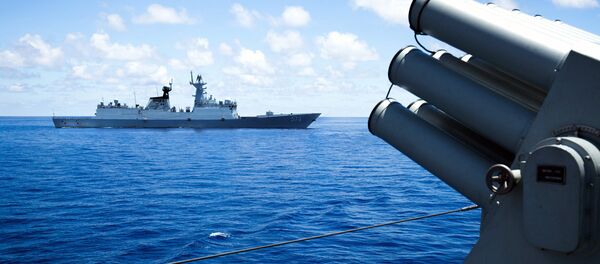The ministers stated that ASEAN countries and China must refrain from taking any unilateral actions that could undermine the existing state of affairs and lead to increased tensions in the South China Sea.
They also called on the countries to avoid land reclamation and any further construction of outposts in the sea.
Radio Sputnik talked to Dr. Carl Thayer, an emeritus professor of the University of New South Wales at the Australian Defense Force Academy, about this proposed code of conduct and its effect on the situation in the region.
“ASEAN and China have just agreed to a framework for that code. They set out a timetable, that they will approve it and further it in August and commence consultations in November to draw up the code of conduct,” Thayer said.
He further said that the code of conduct is to “guide state behavior and not to settle any sovereignty disputes.”
However, according to the expert, its legally binding nature is a cause of concern.
“The geographies of this dispute must be considered. What is the South China Sea? There is a definition by the international hagiographic organization, and then there is ASEAN’s definition and its treaty of nonnuclear weapons. Furthermore, there is China’s definition of it, so the geographies of the area need to be determined,” Thayer said.
“The legally binding nature is another step and at present China seems to be pressing the foreign minister to sign the document and that would be non-legally binding, but some of the ASEAN members are saying that the national legislatures such as China’s National People’s Congress should ratify it with the United Nations,” the expert said.
According to him, so far it is unclear what will be the “dispute management mechanisms” if, for example, two ships ram into each other or one party starts new construction on one of the islands.
Talking about what must be done in the future to ensure the stability of the South China Sea, the expert said that it is important to maintain a “positive diplomatic trend.”
“It’s necessary for all the parties to back up the peace process. Self-restraint is vital: not to do anything provocative. In other words, back the ASEAN states and China in the consultations, refrain from provocative activities and prevent all other parties to take steps to further militarize the South China Sea,” Thayer concluded.
ASEAN was established by Indonesia, Malaysia, the Philippines, Singapore and Thailand in 1967. Since then, Brunei, Myanmar, Laos, Vietnam and Cambodia have joined the organization.
The association strives to enhance regional cooperation in the economic, social, cultural and other spheres, as well as promote peace and security.
Within the framework of the 50th ASEAN Foreign Ministers’ Meeting (AMM) and related meetings held from August 2-8, the Philippine capital brought together the heads of foreign offices from 27 states.



